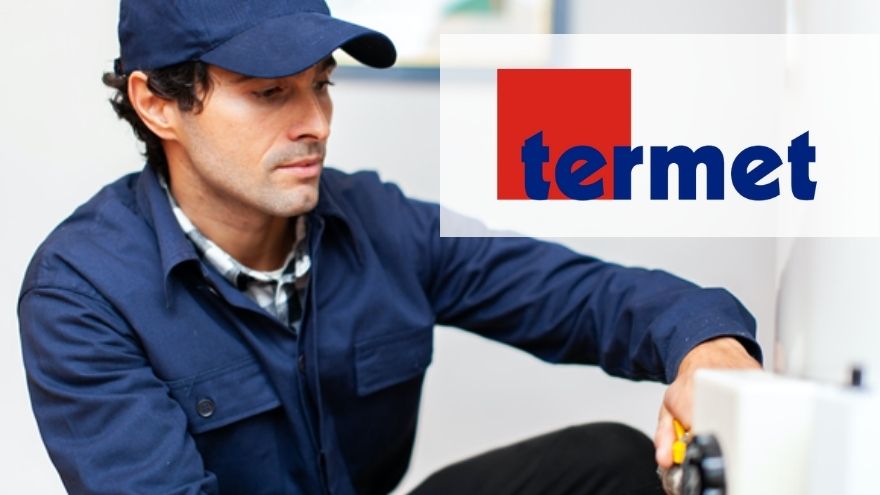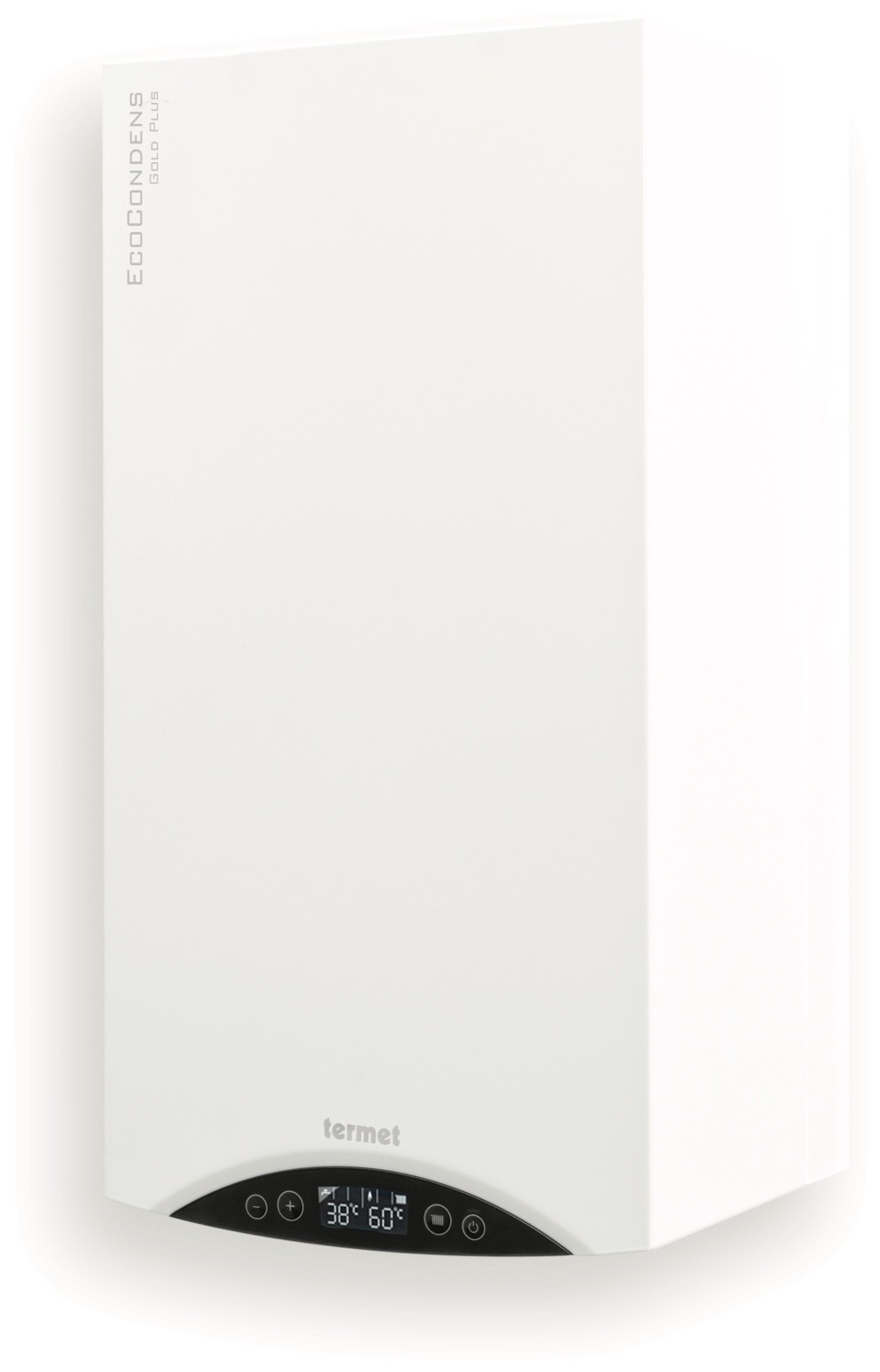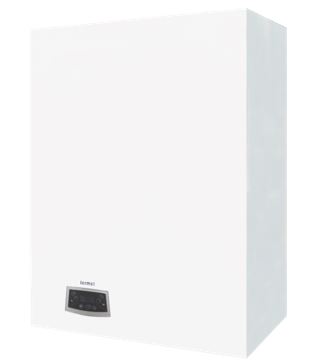If you want to optimize the boiler operation, adjust it to the outside temperature. You can do this by installing an appropriate sensor and setting the heating curve. Thanks to this solution, the central heating system will automatically select the supply temperature depending on the conditions outside the building and the heat demand. Read how to do it step by step!

From the article you will learn:
- what is the heating curve,
- what factors influence the heating curve,
- how to set the heating curve,
- where to install the external temperature sensor,
- what is the " Termet Comfort" system?
What is a heating curve?
The heating curve is the relationship between the boiler supply temperature and the temperature outside the heated building. A sensor installed outside the facility provides the boiler controller with information regarding external conditions. If an external external temperature sensor is connected, the boiler controller automatically recognizes its presence and switches to the weather function mode. The controller selects the heating water temperature depending on, among others, on the outdoor temperature and the slope of the heating curve.
What factors influence the heating curve?
The heating curve will vary depending on the type of central heating installation. Due to different supply temperatures, a heating curve can be distinguished for radiator heating and for underfloor heating.
Check out the Termet brand offer!
Other factors also influence the heating curve. The most important ones include the subjective feeling of comfort of the tenants , the structure of the building , the level of its insulation , and the location . For example: a poorly insulated house in the mountains will require higher heating supply temperatures than a well-insulated block of flats in the city center.
How to set the heating curve?
The first setting of the heating curve should be performed by an authorized service employee who is responsible for connecting the temperature sensor and starting the condensing boiler . It is worth remembering that this configuration does not have to be the final one - it may be necessary to make adjustments while using the system. Setting the heating curve correctly sometimes requires several attempts. After changing the settings, observe whether the conditions inside the building have improved or just the opposite.
 Any modifications to the heating curve configuration must not be made suddenly. After each correction, you must wait at least one or two days to reliably assess the temperature changes inside the building . In this way - by trial and error - you can achieve thermal comfort in every facility.
Any modifications to the heating curve configuration must not be made suddenly. After each correction, you must wait at least one or two days to reliably assess the temperature changes inside the building . In this way - by trial and error - you can achieve thermal comfort in every facility.
The correct slope of the heating curve guarantees the same internal temperature under different outdoor conditions. The boiler controller increases the heating water temperature when it gets colder outside the building and lowers it when the weather favors the building's heating.
If the user feels a lack of thermal comfort with the current settings of the heating system, he should readjust them. If the room seems underheated, it can shift the heating curve upwards. Conversely, when the indoor temperature seems too high, the curve should be shifted down.
Where to install the external temperature sensor?
The temperature sensor must, of course, be mounted outdoors, but it should not be exposed to atmospheric factors that could disturb the measurements. Therefore, it should be installed in a place protected from strong wind and rainfall. However, avoid building or covering the sensor - it must transmit actual data about the outside temperature to the controller.
The optimal place to install the temperature sensor is the northern wall of the building. It should be at least 2 meters high. This will allow for reliable data reading. Locating it closer to the ground could result in underestimated measurements in winter or overestimated measurements in summer.
Check out the Termet brand offer!
What is the Termet Comfort system?
In addition to the external temperature sensor, it is also worth investing in appropriate automation that will ensure economical operation of the device. There is currently a wide selection of room temperature controllers available on the market, from very simple ones to controllers with more advanced functions.
Simple regulators are, for example, the ST 292 V2 and ST 292 V3 models intended for Termet condensing boilers . In addition to ongoing communication with the heating device, they also enable, among other things, setting a weekly heating schedule. Even more functions are offered by a regulator using the Open-Therm protocol, which ensures two-way communication with the boiler. For ECOCONDENS SILVER series boilers it is the EASYREMOTE regulator, and for ECOCONDEN CRYTSAL II PLUS the CR11011 regulator.
However, the most opportunities for economical heating management are provided by the use of Internet control, e.g. via the "Termet Comfort" System. This is a solution dedicated to condensing boilers from the ECOCONDENS GOLD PLUS, ECOCONDENS INTEGRA II PLUS and ECOCONDENS SOLD PLUS series equipped with a LIN interface. Thanks to the convenient application and Thanks to the clear interface you can easily:
- monitor the temperature in the room,
- change the boiler operating mode,
- set a weekly heating schedule,
- program operating cycles for the hot water tank.
Of course, the mobile application also gives you the opportunity to change the heating curve settings. And all this via the Internet, even when you are not in the building.
Weather control and its advantages
 Automating home heating brings only benefits to the building's residents. Appropriate automation provides them with, among other things:
Automating home heating brings only benefits to the building's residents. Appropriate automation provides them with, among other things:
- Thermal comfort - the boiler responds to weather changes, which allows it to maintain the internal temperature at a constant level, regardless of the conditions outside the building.
- Economy and ecology - the supply temperature adapts to external conditions, which means that the boiler never burns more gas than necessary.
- Convenience of use - once the heating curve is set, it ensures thermal comfort every day. The boiler itself adjusts the temperature to the demand, limiting the user's duties to refilling fuel and removing any ash.
- Possibility of remote control - appropriate automation allows you to lower or raise the temperature in the building remotely. Thanks to this, the heating remains under the user's control even when he is away from home.
Termet - thermal comfort in every building!
As you can see, installing a room regulator and an outdoor temperature sensor is not difficult. This inconspicuous modification, however, completely changes the way of using home heating - underfloor or radiator. The guarantee of constant thermal comfort in all outdoor conditions is the correct setting of the heating curve. This process just requires a bit of patience and careful observation, and if necessary - the configuration can always be improved.
If you are looking for ready-made heating systems for your home, check out the Termet brand offer. Its products are characterized by full compatibility, precision of operation and reliability even in demanding conditions! Want to learn more? Contact us!